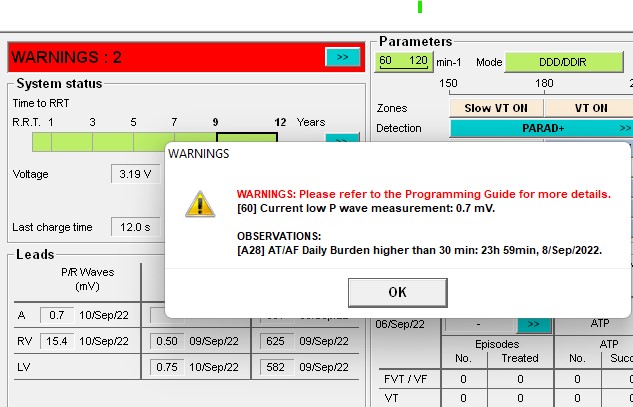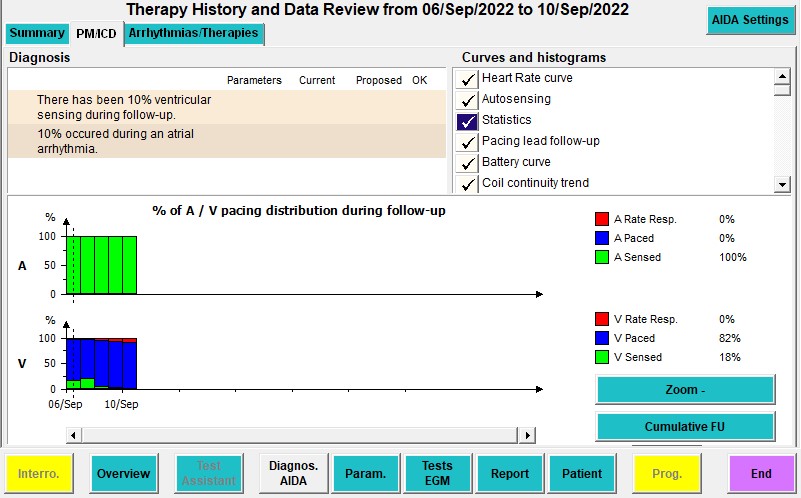AF alert
Case Summary
0 of 1 Questions completed
Questions:
Information
You have already completed the case before. Hence you can not start it again.
Case is loading…
You must sign in or sign up to start the case.
You must first complete the following:
Results
Results
Time has elapsed
Categories
- Not categorized 0%
-
This patient has endured sustained atrial arrhythmia. Interrogation reveals ongoing atrial fibrillation (AF):

In a patient implanted with a CRT device, two principle questions need to be answered when discovering the presence of AF.
Anticoagulation
Occurrence of AF episodes is associated with thromboembolic events such as stroke. As the atria cease to contract, blood flow slows down especially in the left atrial appendage with increased risk of thrombus formation. When AF is discovered on a 12-lead ECG, a risk score (CHA2DS2-VaSc score) is used in order to decide whether anticoagulation therapy should be started. When AF is detected by a CRT device in a HF patient, the duration of the episode is often used to set the indication for anticoagulation. A cut-off duration often used is 24 hours but 1 hour or even 6 minutes is also used. The CHA2DS2-VaSc score is less relevant in these patients as the patient should already score sufficiently for anticoagulation based on the underlying heart disease.
Delivery of CRT (%CRT)
For CRT to work, percentage of the biventricular capture (%CRT) needs to be near 100%. The cut-off of minimal %CRT for the therapy to be efficacious is not strictly defined but in the ESC guidelines a cut-off of 90-95% is recommended. During AF in patients with preserved atrioventricular (AV) conduction, intrinsic right ventricular sensed events may impede left ventricular capture. While algorithms exist which trigger left ventricular pacing on right ventricular sensed events, LV capture is limited and CRT is less efficient. In these patients, rate control needs to be optimized, most often requiring maximal dose of beta-blockers. Invasive procedures may be required such as AF ablation or even AV node (His) ablation in order to ensure a high % of CRT.
Back to our patient
With a CHA2DS2-VaSc score of 4, he was egible for anticoagulation therapy which was started the same day.
In our patient, EGM during interrogation showed correct biventricular pacing but device interrogation can reveal more information about %CRT in the previous period.
Under Diagn.AIDA -> PM/ICD -> Statistics we observe that the past few days, % CRT was at 100% (no green in the bars). Remote monitoring showed 100 %CRT in the period following the device interrogation. During a telephone call a few weeks later he confirmed to remain asymptomatic therefore no ablation (of AF or His bundle) were planned at that time.
- 1
- Current
- Review / Skip
- Answered
- Correct
- Incorrect
-
Question 1 of 1
1. Question
Patient
70 year-old patient with ischemic cardiomyopathy and left bundle branch block has recently been implanted with a CRT-D device (GALI DF4 SonR CRT-D). He has been asymptomatic since implantation, with dyspnea during exertion such as before implantation (NYHA II).
You perform a device interrogation the week after implantation and find the following alert.

Question
Which of the following statements is correct?
CorrectIncorrect


